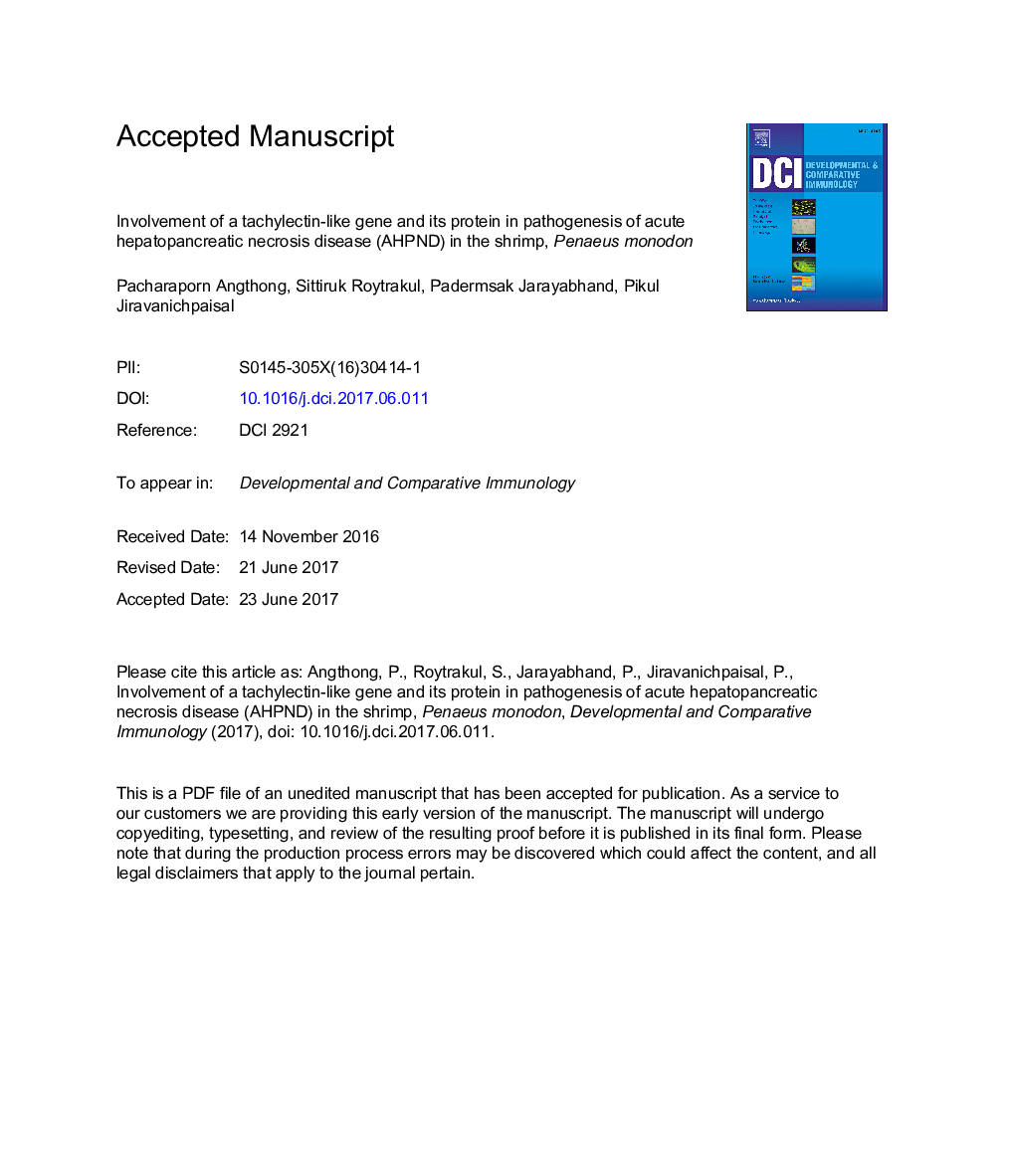| Article ID | Journal | Published Year | Pages | File Type |
|---|---|---|---|---|
| 5540136 | Developmental & Comparative Immunology | 2017 | 26 Pages |
Abstract
A shrimp disease, the so-called acute hepatopancreatic necrosis disease (AHPND) is caused by a specific strain of Vibrio parahaemolyticus (VP) and it has resulted in significant losses to the global shrimp farming industry. In our previous study, three of tachylectin-like genes were cloned and characterized from the intestine of Penaeus monodon, designated as Penlectin5-1 (PL5-1), Penlectin5-2 (PL5-2) and Penlectin5-3 (PL5-3). These three genes all contain fibrinogen-related domain (FReD). The expression level of PL5-1, PL5-2 and PL5-3 was elevated in the stomach after oral administration with AHPND-causing V. parahaemolyticus 3HP (VP3HP). A polyclonal antibody to PL5-2 was successfully produced in a rabbit using the purified recombinant PL5-2 as an immunogen, and this because only the predominant protein PL5-2 could be successfully purified from shrimp plasma by affinity chromatography using a N-Acetyl-d-glucosamine column allowed us to perform functional studies of this lectin. The native purified PL5-2 protein had binding and agglutination activities towards VP3HP. To further understand the functions and the involvements of this lectin in response to AHPND in shrimp, RNAi-mediated knockdown of PL5-1, PL5-2 or PL5-3 was performed prior to an oral administration of VP3HP. As a result, Penlectin5-silencing in shrimp challenged with VP3HP showed higher mortality and resulted in more severe histopathological changes in the hepatopancreas with typical signs of AHPND. These results therefore suggest a role for crustacean fibrinogen-related proteins (FRePs) in innate immune response during the development of AHPND, and maybe also during other infections.
Keywords
Related Topics
Life Sciences
Biochemistry, Genetics and Molecular Biology
Developmental Biology
Authors
Pacharaporn Angthong, Sittiruk Roytrakul, Padermsak Jarayabhand, Pikul Jiravanichpaisal,
